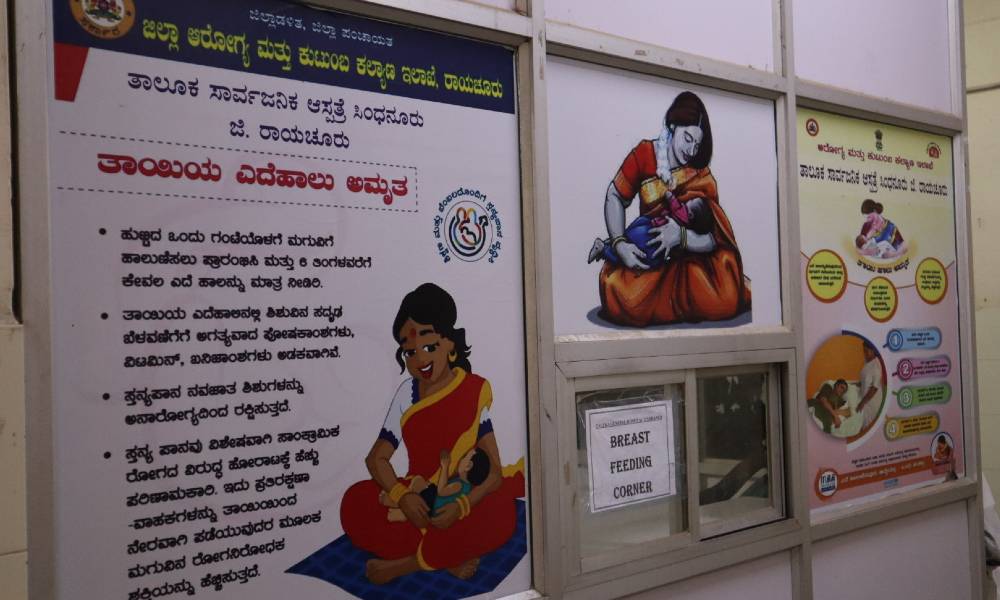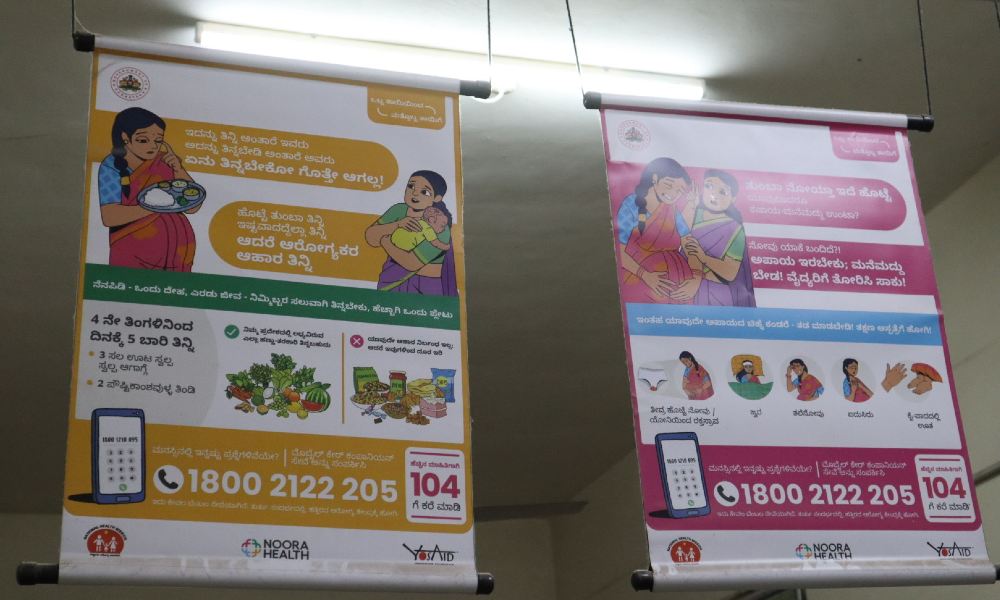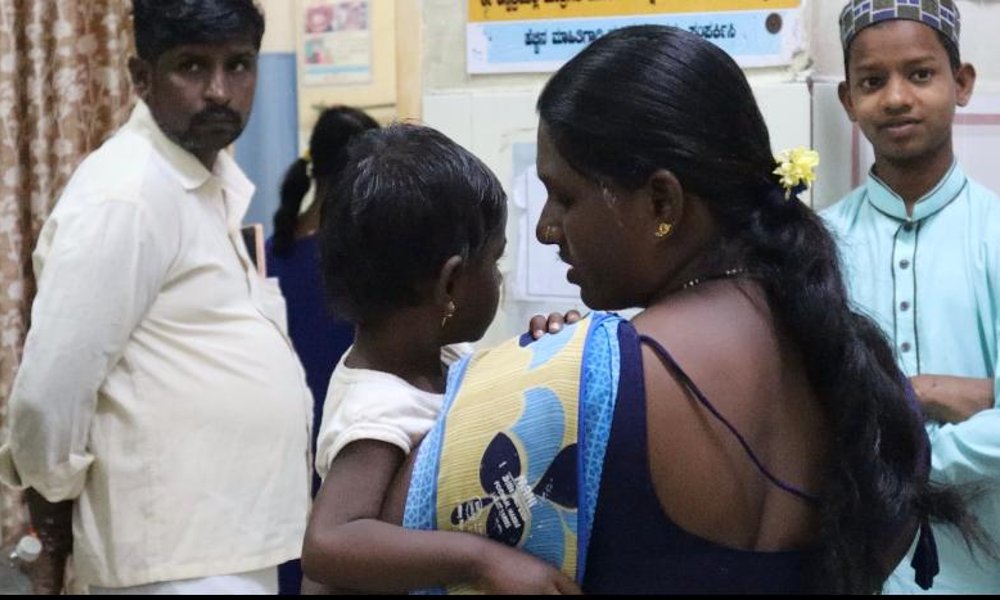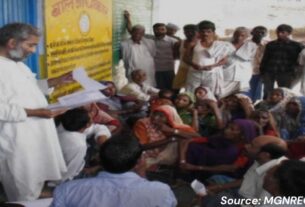Due to the non- availability of female doctors in the Sindhanur Taluk General hospital, women have to spend more on treatment in private hospitals.
Since morning Ratnamma had been waiting in a queue of patients, for her turn to get diagnosed by the gynaecologist. Although her turn had come, she asked the other patients in the queue after her to go ahead. She said she was confused whether to get diagnosed by a male gynaecologist. After a while, she got up and left the hospital without getting treatment. She said she would visit a female doctor elsewhere.
Ratnamma is one of the many patients visiting the taluk general hospital for antenatal care. But as no female doctors are available in the hospital, they prefer to go to a private hospital for gynaecological health issues. Bhaktbardhan, admin assistant officer at the Sindhanur Taluk General hospital said that the hospital authorities and the Administrative Officer are trying their best to hire a female doctor. This concern is being raised at meetings with the Raichur district’s Health and Family Welfare Department, he added.
While the general hospital struggles to hire a female gynaecologist, most women in the taluk turn to private hospitals which results in families spending more on their treatment.
Tasleem K, a patient visiting the private clinic said, “I visited the taluk general hospital a few weeks ago but other than Dr Nagaraj Katwa, who is a male gynaecologist, female doctors are not available. I am a little hesitant to get diagnosed by him.”
Dr Katwa, said that as he is the only gynaecologist appointed in the hospital, he is either always overworked or is facing complaints from the patient’s family, due to not having a female doctor for maternity care.
“I have noticed quite a few times that most of the teenage girls who visit me once for any medical concern never show up if asked to consult again. At times I also had to deal with the patient’s family who argue with me in the hospital,” he added.
He expressed that basic facilities like normal and cesarean section delivery, comprehensive abortion services, family planning service, clinical and investigation services, Sexually Transmitted Infection and Reproductive Tract Infection management, are some of the basic facilities available in the hospital which don’t cost much to the patients. Yet, hardly any patients show up.
However, it is mostly the social stigma stuck in people’s mind that prevents them from getting diagnosed by a male doctor. This is largely the case for teenage girls, he said.

Amruta, a 20-year-old living in Mehboob colony, Sindhanur said, “Three months ago when my menstrual cycles were delayed by a few months, I had to consult a doctor. I visited the general hospital expecting a female doctor to diagnose me but as there were no female doctors available, I preferred visiting a private doctor.”
The National Family Health survey-Five (NFHS-5), states that around 60 percent of women in the country face trouble in accessing healthcare for themselves, the reasons are inadequate infrastructure and insufficient health personnel. Around 40.4 percent of women reported non-availability of drugs as a problem, while 39.2 percent reported a lack of health providers as cause for not accessing health care.
Furthermore, 31.2 percent of women reported concerns about no female health providers available at healthcare centres in rural India.
A research study by the National Library of Medicine states the necessity of female doctors in the rural areas of India in addition to female attendants, physicians and for maternal and child health care.
Bhaktbardhan, admin assistant officer at the Sindhanur Taluk General Hospital said, “Due to the lack of female doctors and female attendants, we had incidents of families of the patients arguing with us and the hospital authorities.”
Dr .Ayyanna Gowda, the taluk health officer said, “Currently we are facing acute shortage of doctors in the general hospital. We have only one doctor for almost all the departments like gynaecology, paediatrics, dentistry and orthopaedic. We are trying our best to fulfill the necessary demands of the patients with our limited access of facilities.”
Dr. Shifa, a private clinic gynaecologist said, “On an everyday basis an average 30-40 women visit my clinic. However, the number of teenage girls visiting for a menstrual cycle concern is more.”
She explained that her consultation fees are range from Rs 400 to Rs 600. She said she tried to provide medicine and drugs from her clinic.

Dr Shruti Patil, a pediatrician at the taluk general hospital said, “My shift is from 9:30a.m. to 4:30p.m. As we don’t have separate beds for children, I diagnose children in my cabin. Common sicknesses like fever, cough and cold or even diseases like anaemia are diagnosed in my cabin.”
Chandana, Public Health Expert in Bangalore said that the shortage of female doctors and attendants limits the access of women to healthcare services. Addressing this issue is crucial for ensuring equitable healthcare delivery and promoting the well-being of communities.
She added that the taluk general hospital should ensure basic infrastructural facilities and it ought to include the need for recruitment.




